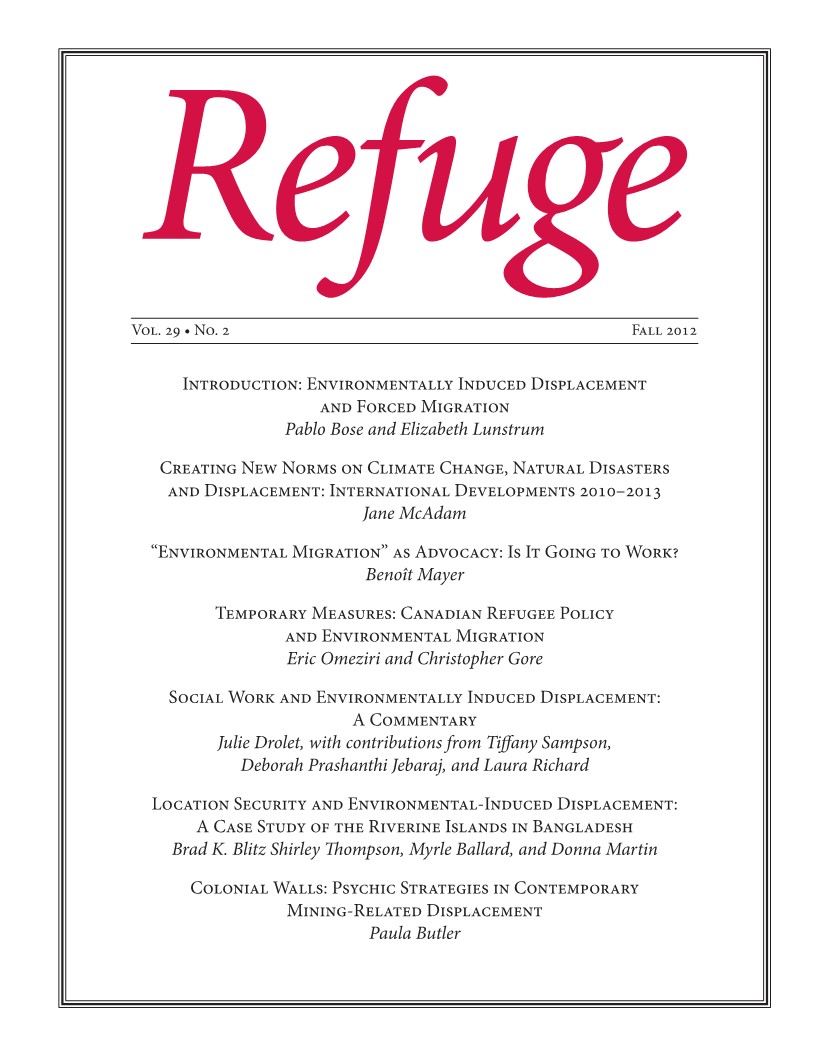Introduction Environmentally Induced Displacement and Forced Migration
DOI:
https://doi.org/10.25071/1920-7336.38163Keywords:
EID, environmentally induced displacement, environmental refugeesAbstract
Disappearing coastlines, fields and homes flooded by rising waters, lands left cracked and barren by desertification, a snowpack shrinking in circumpolar regions year by year—these are only a few of the iconic images of climate change that have evoked discussion, debate, and consternation within communities both global and local. Equally alarming has been the threat of what such degraded and destroyed landscapes might mean for those who depend upon them for their livelihoods—as their homes, as their means of sustenance, and as an integral part of their cultural and social lives. A mass of humanity on the move—some suggest 50 million, 150 million, perhaps even a billion people1—the spectre of those forced to flee not as the result of war or conflict but rather a changed environment haunts the imaginaries of national governments, international institutions, and public discourse alike. Are these environmental refugees? Should they be granted the same protections and support as those who can prove their fear of and flight from persecution? Do the sheer numbers contemplated by the scale of the events and factors threaten to overwhelm the international refugee system?
Metrics
Downloads
Published
How to Cite
Issue
Section
License
Copyright (c) 2012 Pablo Bose, Elizabeth Lunstrum

This work is licensed under a Creative Commons Attribution-NonCommercial 4.0 International License.
Refuge authors retain the copyright over their work, and license it to the general public under the Creative Commons Attribution-Non Commercial License International (CC BY-NC 4.0). This license allows for non-commercial use, reproduction and adaption of the material in any medium or format, with proper attribution. For general information on Creative Commons licences, visit the Creative Commons site. For the CC BY-NC 4.0 license, review the human readable summary.







